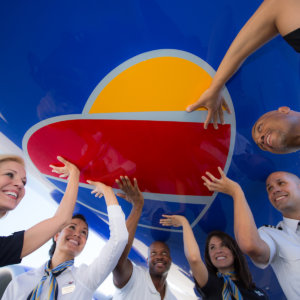The Leaders’ Choice
The next generation of business executives will face a choice: What kind of companies do they want to lead? Will they lead organizations that will treat most employees as costs to be minimized — or ones where both employees and the company prosper together?
Business leaders have a choice in how they compete. The popular way this choice has been framed is between a “high-road” and “low-road” option.1 High-road companies seek to compete through high productivity, innovation, and quality customer service that both require and support high wages and good job and career opportunities for employees. The low-road strategy seeks profits and shareholder returns by minimizing costs and controlling labor in ways that keep wages low for most employees and/or independent contractors.
Two decades of research on high-road companies have documented their ability to achieve world-class productivity and service quality in industries as diverse as steel, autos, airlines, telecommunications, apparel, health care, computers, and semiconductors.2 More recent case studies are documenting similar patterns of success in smaller businesses in manufacturing, retail, and health care.3
Southwest Airlines Co., headquartered in Dallas, Texas, is often viewed as the prototype high-road company. Over the past 30 years, it has been the most profitable airline in the United States. From the time the company started flying in 1971, founder and former CEO Herb Kelleher decided he would compete differently than other legacy airlines. Rather than fight to avoid unions or treat them as adversaries, Kelleher accepted them but insisted they work in partnership with him by avoiding rigid work rules and fostering teamwork throughout the organization. The business strategy required that everyone in the organization work together to reduce the time from landing to the next takeoff. This effort generated the productivity that allowed Southwest to keep prices low while also providing good jobs and great customer service. It is not surprising that Southwest has often been rated as one of the best places in America to work.4
In almost every industry, there are some companies that are managed for long-term (not just quick) returns, have business strategies that stress great customer service, and figure out how to operate efficiently. Such companies draw on the talents of employees who identify with the organization’s mission. In retail, compare Costco Wholesale Corp. and Walmart.
Walmart has grown to become the largest U.S.
References
1. For a discussion of these two options, see T.A. Kochan and P. Osterman, “The Mutual Gains Enterprise” (Boston, Massachusetts: Harvard Business School Press, 1994).
2. For a summary of the evidence, see E. Appelbaum, J.H. Gittell, and C. Leana, “High Performance Work Practices and Sustainable Economic Growth,” Center for Economic Policy and Research, March, 2011.
3. See www.hitachifoundation.org/our-work/entrepreneurship-at-work-program.
4. J.H. Gittell, “The Southwest Airlines Way” (New York: McGraw Hill, 2003).
5. See customer ratings from the American Customer Service index and employee ratings from Glassdoor for Walmart, Costco, and other retailers at www.goodjobsscore.com.
6. “Better Buy: Wal-Mart Stores Inc. or Costco Wholesale?” The Motley Fool, www.fool.com.
7. T.A. Kochan, “What the Market Basket Deal Says About American Workers,” http://fortune.com, August 28, 2014.
8. Z. Ton, “The Good Jobs Strategy: How the Smartest Companies Invest in Employees to Lower Costs and Boost Profits” (New York: Houghton Mifflin Harcourt, 2014).
9. D. McGregor, “The Human Side of Enterprise” (New York: McGraw Hill, 1960).
10. J.P. MacDuffie and T.A. Kochan, “Do U.S. Firms Invest Less in Human Resources? Training in the World Auto Industry,” Industrial Relations 34, no. 2 (April 1995): 147-68.
11. Relational Coordination Research Collaborative, http://rcrc.brandeis.edu.
12. T. Moroney, “America’s Most Loved CEO Is Having the Best Comeback Ever,” July 31, 2015, Bloomberg Business. www.bloomberg.com.
13. T.A. Kochan, A. Eaton, R. McKersie, and P. Adler, “Healing Together: The Kaiser Labor Management Partnership” (Ithaca, New York: Cornell/ILR Press, 2009).
14. For a quick overview of the course videos, materials, and lessons learned from the students in the MOOC, see “The Next Generation’s American Dream and How to Achieve It: Lessons From Our MITX Course,” www.speakupforwork.com.
15. www.glassdoor.com/index.htm.
16. www.indeed.com.

